Welcome to the Neighborhood! In this final installment of our 5-part series, we’re taking you through 3 neighboring areas with older and historic homes. We’ll share some reasons why we love them, some insights on their history, and show off some of our favorite projects we’ve done in these areas.
Today’s featured neighborhoods: Eastmoreland, Westmoreland, and Sellwood!
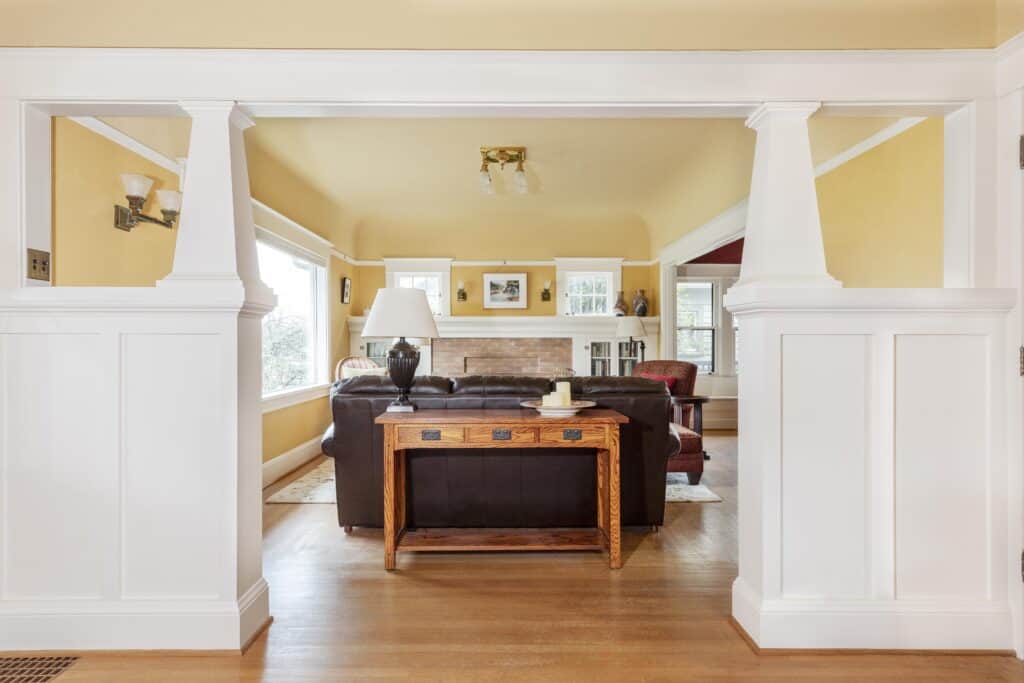
A few minutes south on SE Milwaukie Ave lies three neighborhoods that are quaint and quiet, yet still vibrant with plenty to do! With beautiful parks, river walks, the Eastmoreland Golf Course, antique stores, and Oaks Park Amusement Park, there is plenty to keep people occupied and visiting this part of town. Taking a stroll down the sidewalk of any of these neighborhoods gives you an architectural history lesson, from modern complexes, to mid-century ramblers, to English cottages and Colonial Revivals, Bungalows and Craftsman, to late Victorian farmhouses. The area is a melting pot of architecture!
But how did a cattle farm turn into one of the most sought after neighborhoods? And how did a couple of antique shops save a struggling community?
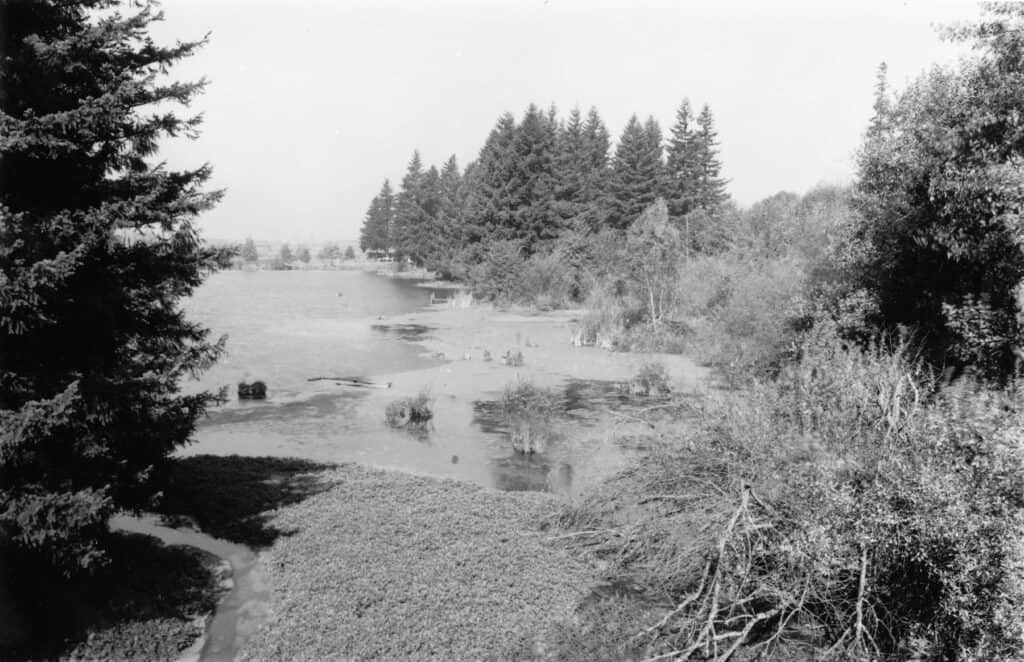
THE HISTORY
As with the majority of Portland, the areas we now know as Eastmoreland, Westmoreland, and Sellwood started off as farm land. Settled in the mid-1840s by immigrants from the Oregon Trail, settlers started tilling the land with fruit nursery businesses, logging, and general farming. Distanced from the far away city of Portland, most social events happened within the city of Milwaukie. Transportation to and from the area was either via the river on steamboats or through the muddy Milwaukie Road. 150 years later, this road, now named SE Milwaukie Avenue, is still one of the main roads to get to and from these neighborhoods.
In May 1882, a real estate company purchased 321 acres from the Rev. John Sellwood and filed a plat which they named after him. To attract potential buyers, the real estate company provided free ferry rides from Portland to the new neighborhood.
By 1887, Sellwood was officially incorporated into the city of Portland. Streetcars began to service the area along with other neighborhoods east of the Willamette. 100 homes had been built in the area by this point, along with three stores, a church, and a school. In 1892, streetcar transportation significantly improved to the area causing a building boom and urbanizing the old farming community.
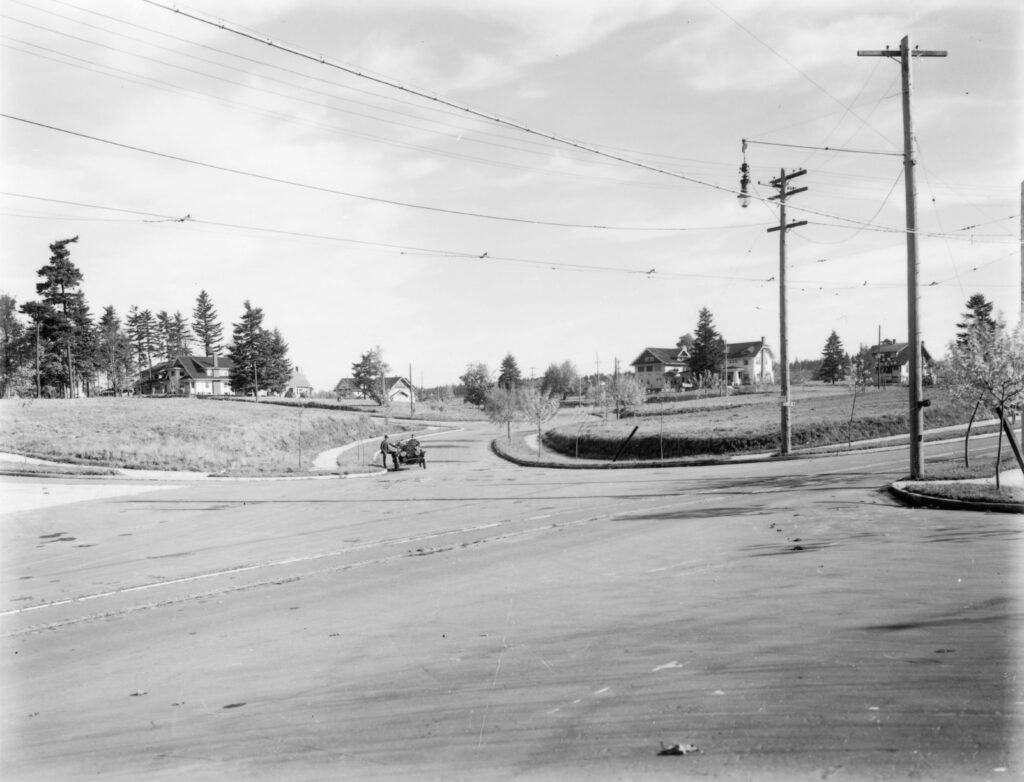
Just north of Sellwood, William S. Ladd’s son, William Mead Ladd, was overseeing the Ladd Estate Company and set his sights on developing the company’s Crystal Springs Farm. Influenced by the City Beautiful Movement, which focused on urban development that reflected beauty, harmony, system, and order. In 1909, Ladd sought the help of John C. Olmstead to develop the 700 acres of Crystal Springs Farm into East and Westmoreland.
“Westmoreland”, developed west of the railroad tracks, followed the city’s familiar grid street plan. “Eastmoreland” was developed east of the tracks and employed a “grid and meander” plan. The developers promoted these neighborhoods as modern subdivisions with sidewalks and curbs in place. Eastmoreland was advertised as a prestigious subdivision for the well to-do, with close proximity to the newly built Reed College. Westmoreland was advertised for the white-collar professionals who rode the streetcars to and from the city. Colonial Revival Style, Arts & Crafts, Bungalows, and Craftsman Style became the popular style houses for the area, giving the neighborhood a fresh modern look. By comparison, the neighborhood of Sellwood to the south looked more and more like an old farming town.
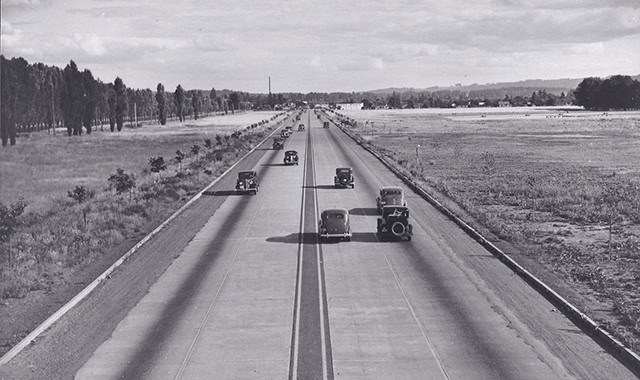
1937 Super Highway (McLoughlin Blvd) view to south from ByBee (photo: Sellwood Moreland Historical Society)
The 1920s saw a building boom for East and Westmoreland, which lasted through the mid-1940s. More families began buying lots within the subdivision, thanks in part to good advertising and a feeling of separation from downtown. Sellwood, on the other hand, had begun to see some hardships with local businesses, only made worse by the Great Depression.
By the 1950s, some businesses and churches began leaving Sellwood and moving up to Westmoreland. Young people who had grown up in the area began moving out in favor of other neighborhoods. A decade later, however, several antique businesses began moving into the empty store fronts of Sellwood, creating some buzz and a reason to visit the area. Young families began rehabbing some of the old farmhouses, revitalizing the neighborhood. Subsequently, all of this growth from Sellwood began helping Westmoreland at the same time, blurring the lines where the neighborhoods start and end.
Today, these neighborhoods are a lively area, separate from the downtown hustle and bustle, but still close enough to commute.
The Projects
1912 Sellwood Bungalow Whole House
One of our longest client relationships, we have helped this family slowly renovate their entire 111-year-old bungalow. The projects have ranged from adding a carport, renovating their kitchen, rehabbing their original dining room built-ins, adding bookcase colonnades, and redoing their two bathrooms and basement. This phased approach has allowed the homeowners to lovingly restore their home as time and budget allowed.
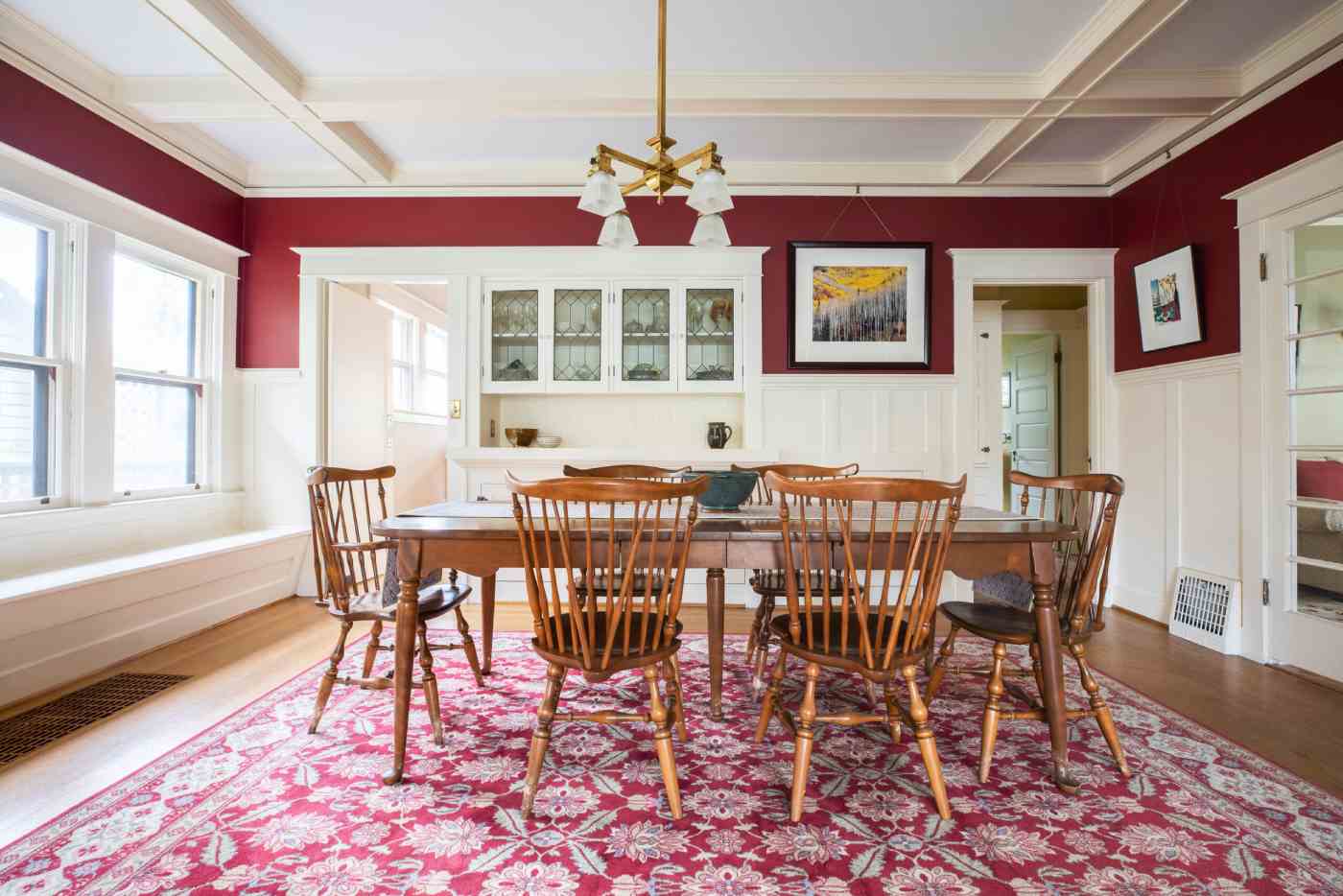
1923 Eastmoreland Basement
When a couple of wine connoisseurs asked us to finish out their basement complete with a built-in wine cellar, we were ready for the challenge! Incorporating a living room, wine cellar, library, and laundry / craft area, the homeowners can now comfortably host friends and family over for wine tastings and always have room to add to their collection.
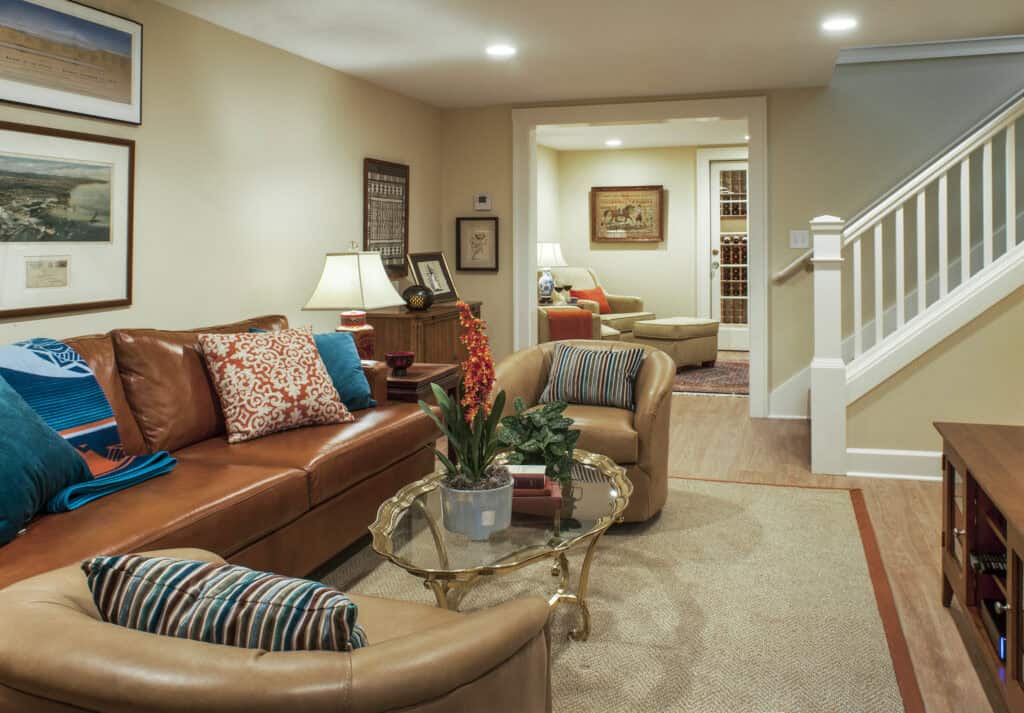
1925 Eastmoreland Kitchen
The homeowners of this 1925 home loved how open their kitchen was when they first bought the home. However, the style was outdated and there were some flow and workspace issues that needed addressing. Keeping within the same footprint of the original kitchen, and keeping it open concept, we rearranged some appliances and updated the finishes and cabinetry to be more timeless. The end result is a beautiful open kitchen to entertain and cook in!
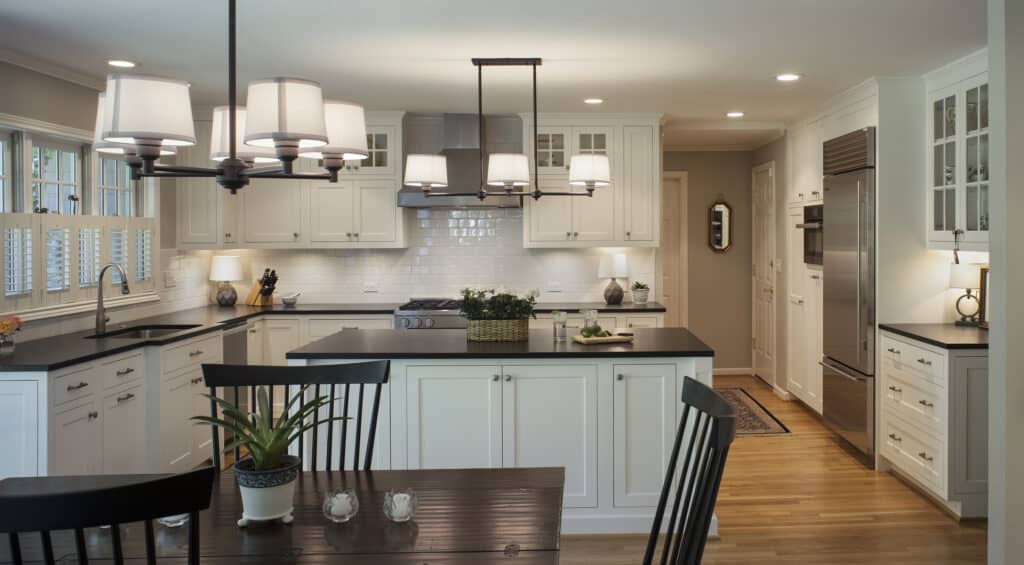
Thank you for following along with our Welcome to the Neighborhood 5-part Series! We hope you enjoyed learning about some of our wonderful neighborhoods. If you have an old home you would like to renovate and want local experts to help, you can reach us by filling out our online form (under Contact Us). We would love to work with you!
Historical information source:
United States Department of the Interior / National Parks Service – National Register of Historic Places Registration Form Eastmoreland: https://static1.squarespace.com/static/5f99bc414eddf3607bc85b85/t/5faf0e82844f9e409e6b37ed/1605308035373/Eastmoreland_Historical_Context_Section_NPSnom.pdf
Histotic Sellwood by Eileen G. Fitzsimons: https://sellwood.org/history/
